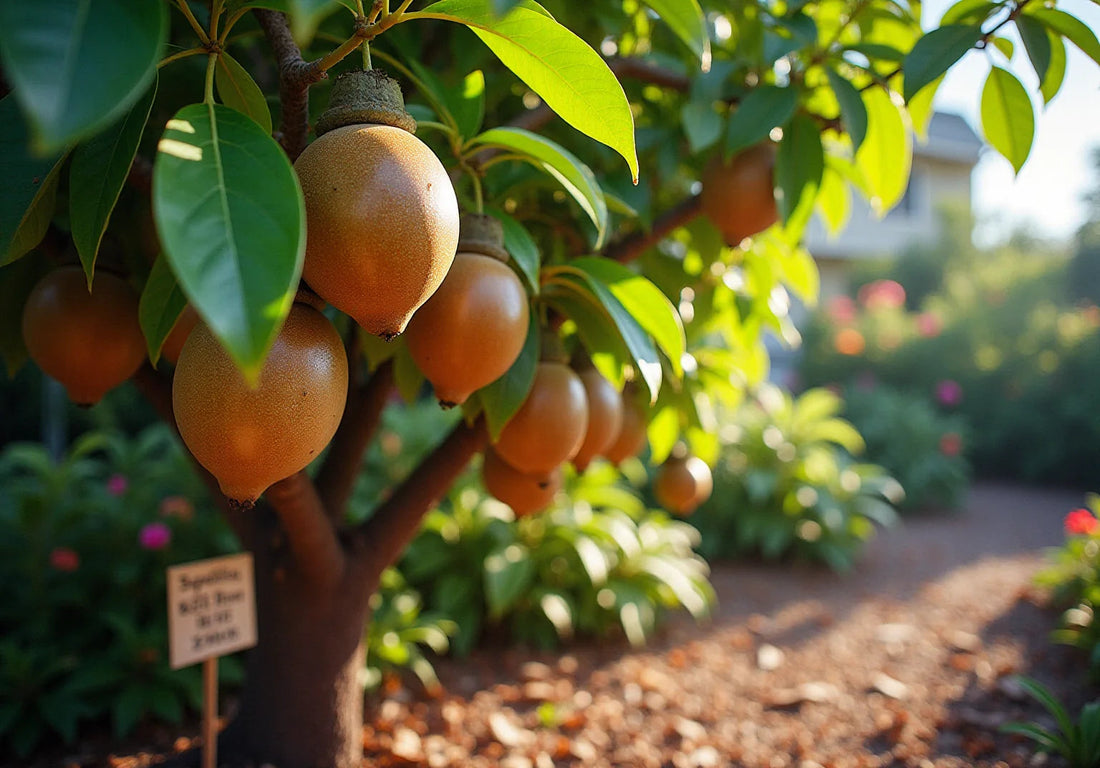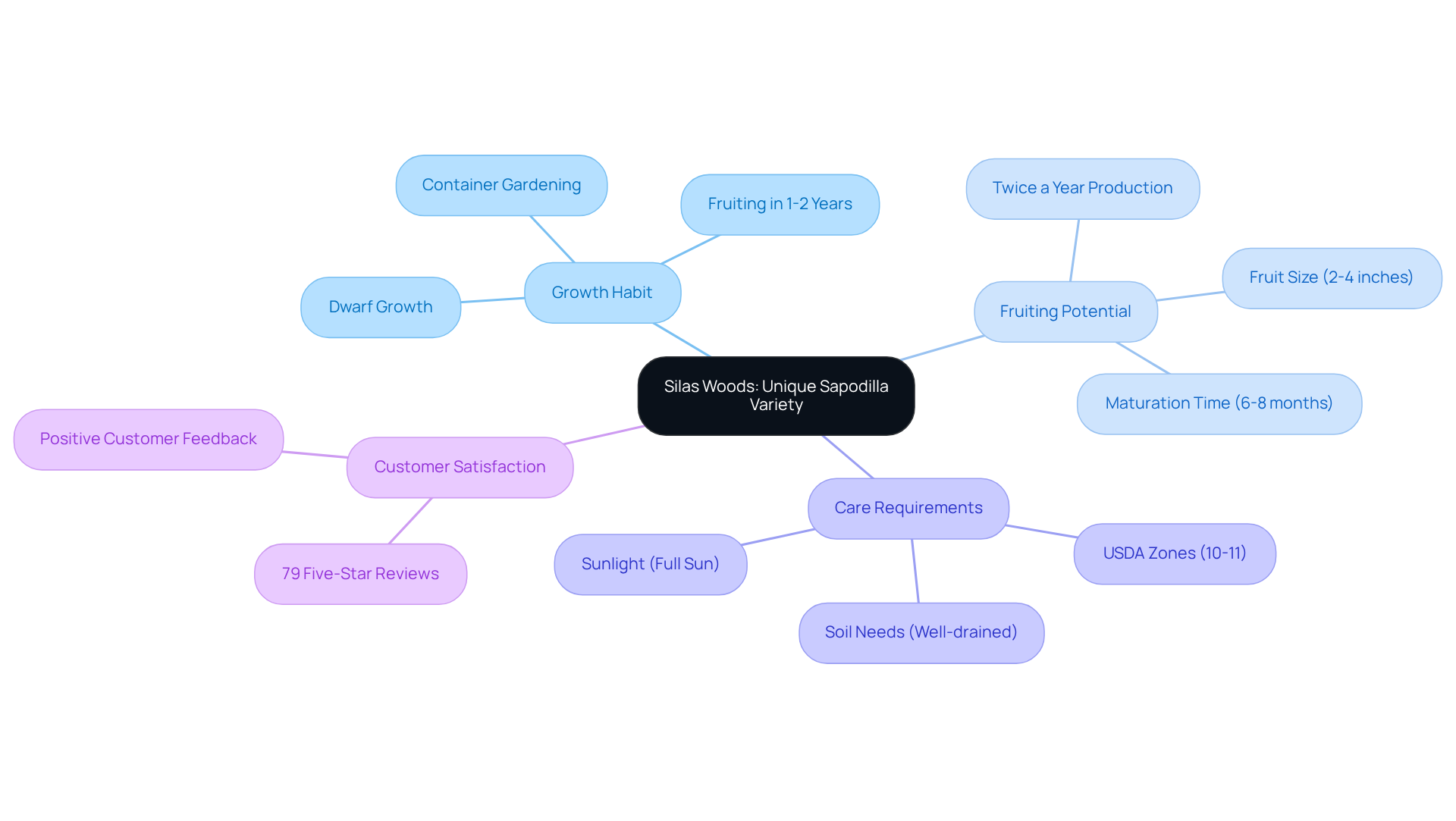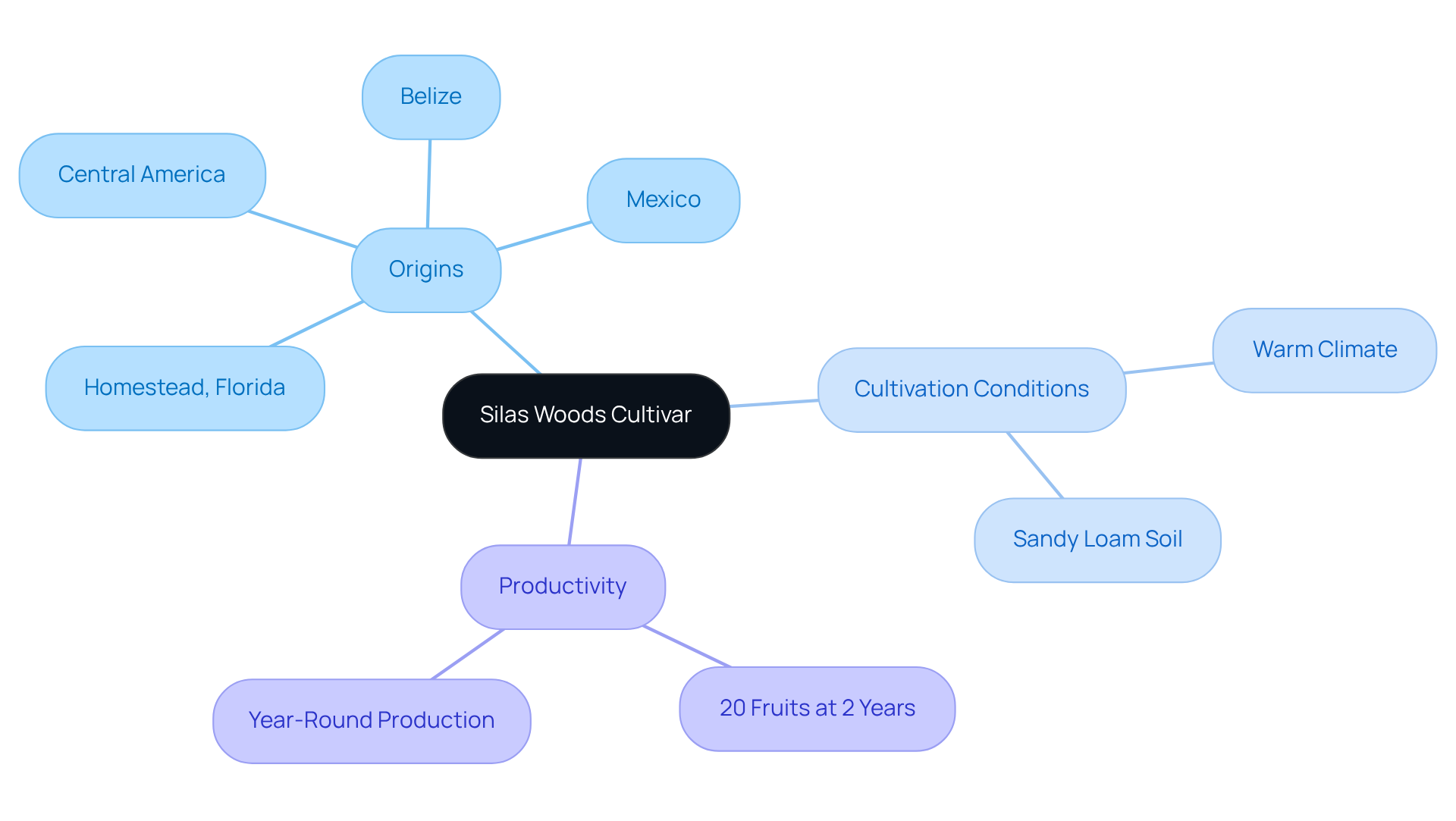
Silas Woods: Understanding This Unique Sapodilla Variety
Share
The Silas Woods sapodilla variety is characterized by its dwarf growth habit, rapid fruiting potential, and a flavor reminiscent of sweet brown sugar. These features make it an excellent option for home gardens and container gardening. Additionally, this variety demonstrates remarkable adaptability to various climates, prolific fruit production, and low maintenance requirements. Such attributes significantly enhance its appeal to gardeners seeking a manageable and fruitful tropical plant.
Want to grow Silas Woods Sapodilla in your garden?
Explore Silas Woods Sapodilla Tree at Everglades Farm - shipped directly from Florida.
Define Silas Woods: A Unique Sapodilla Variety
Silas Woods is a unique variety of sapodilla (Manilkara zapota) known for its dwarf growth habit and impressive fruiting potential. This cultivar is notable for its ability to produce fruit within just 1-2 years of planting, particularly when grown in containers. This makes it an excellent option for home gardens and container gardening. The fruit is recognized for its sweet taste, reminiscent of brown sugar, and can be easily scooped out with a spoon when ripe, adding joy to any garden. With its shiny leaves and aromatic blossoms, this variety not only yields delicious fruit but also enhances the visual appeal of outdoor spaces.
The average fruit size ranges from 2 to 4 inches in diameter, and the tree typically produces fruit twice a year, with fruits maturing 6-8 months after flowering. It thrives in USDA zones 10-11 and requires well-drained soil, full sun, and regular watering to ensure optimal growth. To enhance your gardening experience, consider using professional-grade fertilizers available from Everglades Farm. Customer satisfaction is high, with 79% of reviews rating the service as five stars, reflecting the quality and appeal of Silas Woods. This cultivar is a perfect addition for home gardeners looking to cultivate quick-yield tropical greenery. Discover our selections and introduce this distinctive fruit type to your garden today!

Explore the Origin and Development of Silas Woods
The cultivar known as Silas Woods, named in honor of a dedicated member of the Rare Fruit Council International (RFCI), has its origins in the Homestead, Florida area. This cultivar is a selection from the broader species that is native to Central America, particularly Mexico and Belize. Over time, it has been cultivated for its compact size and prolific fruiting capabilities, making it a popular choice among home gardeners. The local growing conditions, characterized by Florida's warm climate and well-drained sandy loam soil, have significantly shaped its development, catering to the preferences of gardeners seeking a manageable and fruitful tree.
Expert assessments highlight the adaptability of sapote farming in Florida, specifically mentioning that the Silas Woods type thrives in the region's subtropical climate. Notably, a two-year-old silas woods tree can yield approximately 20 ripe fruits, showcasing its productivity. Additionally, this clonal variety requires vegetative propagation and possesses the ability for year-round production, further enhancing its appeal for those interested in cultivating tropical produce in their backyards.

Identify Key Characteristics of Silas Woods
The sapodilla known as Silas Woods is notable for its dwarf growth habit, typically reaching heights of under 20 feet when planted in the ground. This variety features glossy, elliptical leaves and produces fragrant white flowers that attract pollinators, enhancing its appeal in gardens. The fruit is spherical, ranging from 2 to 4 inches in diameter, with a smooth, brown skin and a sweet, grainy texture reminiscent of a pear soaked in brown sugar.
Additionally, this type is self-pollinating and highly productive, often requiring fruit thinning to maintain optimal fruit size and ensure tree health. Its adaptability to container gardening makes it particularly favored among urban gardeners. This reflects Everglades Farm's commitment to providing quick-yield tropical plants, including those in the Fast-Growing Trees collection, for home gardening.

Understand Growing Requirements and Care for Silas Woods
The sapodilla of Silas Woods flourishes in well-draining soil and thrives in full sun, requiring a minimum of 6 to 8 hours of direct sunlight each day. This variety demonstrates drought tolerance once established, yet it benefits from consistent watering, especially during dry spells. It can withstand a broad temperature range, from 25°F to 100°F, making it adaptable to various climates.
For optimal growth, using a balanced fertilizer specifically designed for tree crops is advisable, such as a 10-10-10 (N-P-K) ratio. While regular pruning is not essential due to its naturally compact growth habit, thinning the fruit may be necessary to prevent branch breakage and promote larger fruit size. Additionally, repotting these trees every 2-3 years is recommended to prevent root crowding.
Monitoring for signs of nutrient deficiencies is crucial for maintaining tree health. For instance, yellowing leaves may indicate nitrogen deficiency. Lastly, be aware that frost exposure below 30°F can damage sapodilla trees, so protective measures should be taken in colder climates.

Conclusion
Silas Woods represents an exceptional variety of sapodilla, combining quick fruiting capabilities with a compact growth habit. This makes it an ideal choice for home gardens and container gardening. This unique cultivar produces sweet, delectable fruit reminiscent of brown sugar within just a couple of years, while also enhancing outdoor spaces with its attractive foliage and fragrant blossoms.
Key insights into the Silas Woods sapodilla include:
- Its origin in Florida
- Adaptability to various climates
- Specific care requirements needed for optimal growth
The tree thrives in well-drained soil and full sun, and its self-pollinating nature underscores its appeal to gardeners seeking a productive and manageable addition to their landscape.
Cultivating Silas Woods offers the joy of harvesting delicious fruit and the satisfaction of nurturing a resilient and beautiful plant. With its remarkable characteristics and ease of care, this sapodilla variety invites gardeners to enrich their outdoor experience and enjoy the rewards of tropical gardening. Consider adding this delightful cultivar to your garden today to discover its full potential.
Transform Your Garden with Sweet Silas Woods Sapodilla!
Start your tropical gardening journey today and enjoy delicious fruit in just a few years!
Frequently Asked Questions
What is Silas Woods?
Silas Woods is a unique variety of sapodilla (Manilkara zapota) known for its dwarf growth habit and high fruiting potential.
How quickly can Silas Woods produce fruit?
Silas Woods can produce fruit within just 1-2 years of planting, especially when grown in containers.
What does the fruit of Silas Woods taste like?
The fruit is sweet, reminiscent of brown sugar, and can be easily scooped out with a spoon when ripe.
What are the characteristics of the Silas Woods tree?
The tree has shiny leaves and aromatic blossoms, contributing to both its fruit yield and the visual appeal of outdoor spaces.
What is the average size of Silas Woods fruit?
The average fruit size ranges from 2 to 4 inches in diameter.
How often does the Silas Woods tree produce fruit?
The tree typically produces fruit twice a year, with fruits maturing 6-8 months after flowering.
In which USDA zones does Silas Woods thrive?
Silas Woods thrives in USDA zones 10-11.
What are the growing conditions required for Silas Woods?
It requires well-drained soil, full sun, and regular watering for optimal growth.
Are there any recommended products for enhancing the growth of Silas Woods?
Professional-grade fertilizers available from Everglades Farm are recommended to enhance gardening success.
How satisfied are customers with Silas Woods?
Customer satisfaction is high, with 79% of reviews rating the service as five stars, reflecting the quality and appeal of Silas Woods.


